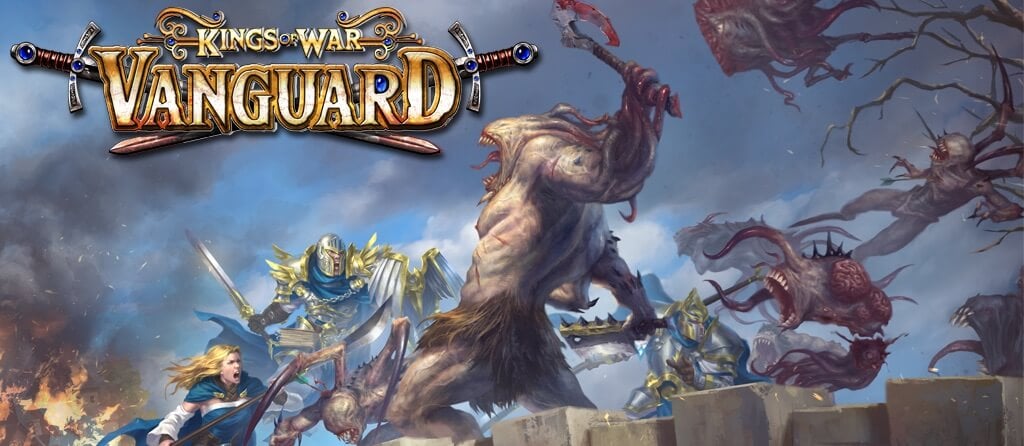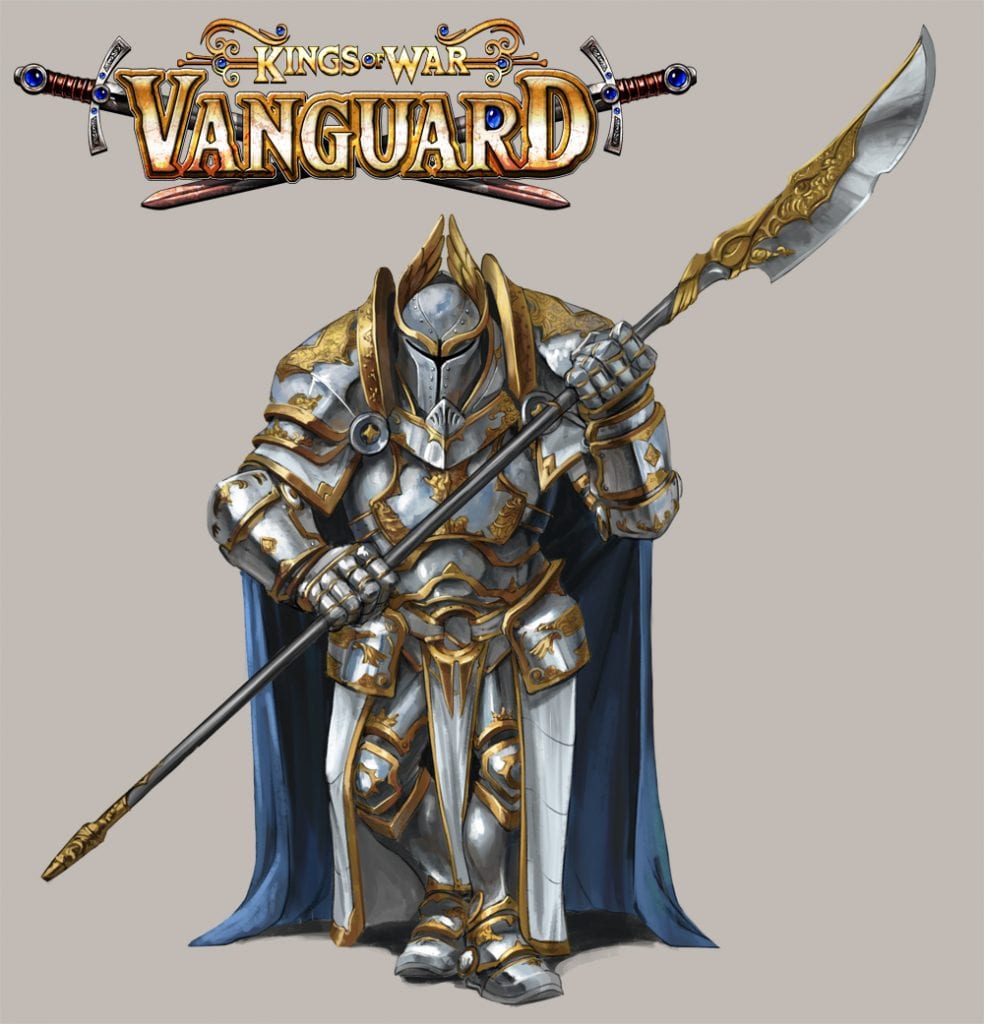Kings of War: Vanguard – Terrain & Scenery
25th Oct 2017
Rob Burman
Kings of War: Vanguard will be launching on Kickstarter on November 1st. Throughout this week, we’ll be exploring the game in more detail and giving you a taste of the rules. In today’s blog, we're highlighting the importance of terrain and scenery.

Although terrain won’t be as fundamental to Vanguard as something like Deadzone, it will still have an important part to play. This will come in two forms: scenery as obstacles and barriers, alongside scenery that will become objectives in a particular scenario. Today, we’re going to have a look at the former and explain how terrain will play an important part in combat.
First, it’s worth mentioning that – just like Kings of War – models and terrain will all have a height value. This is used when determining line of sight and cover. Models all have their height value listed on the stat card, while terrain can be decided before a game starts. What’s more, when a model is standing on a particular piece of terrain, then you combine the numbers to give you the total height.
LOS from your model to an enemy model is considered Blocked if a line to all parts of the enemy model’s base passes through:
- A model or terrain piece of the same height or more as your model, and the enemy model does not have a greater Height than the blocking item. (If the enemy model does have a greater height, LOS is only Partially Blocked) – see below.
- A blocking model or blocking terrain piece of the same height as the enemy model. However, this may be ignored if your model has a greater height than the blocking item and is within 3” of the blocking item
LOS from your model to an enemy model is considered Partially Blocked if:
- only part (not all) of the enemy model’s base is in a position that would be considered Blocked.
- the enemy model is behind a blocking item but has a greater Height
- the enemy model is within an area of difficult terrain that is at least Height 1 (e.g. shooting at a model within a wood)

THE SCENIC ROUTE
In Vanguard, the different types of scenery and terrain that are used are classified into the following types.
Open Ground
Areas of flat open grass, road, or any other clear swathe of land is considered to be Open Ground. Open Ground doesn’t impede a model’s movement in any way.
Obstacles
Obstacles are linear barriers that may lay in a model’s path as it moves. Examples are walls, hedges and fences. Obstacles up to the height of the model cost 2” of movement to cross over, regardless of how fast the model is moving. Anything taller than the model will need to be climbed up and over. Obstacles will often provide cover for targets behind them as they can cause Line of Sight to be partially blocked. What’s more, if a defending model is on the other side of an obstacle and the attack is in its front arc, its Armour is 1 better for this Armour roll, as if it were Braced. Finally, when fighting across an obstacle, there’s no need to Break Away, if you want to disengage an enemy.
Difficult Terrain
Areas of broken ground, wooded areas, ruins, steep scree slopes and marshy ground are all examples of Difficult Terrain. Models count every inch moved in Difficult Terrain as 2”. Thus, a model moving 3” through Difficult Terrain counts as having moved 6”.
Areas of Difficult Terrain should be clearly defined with an obvious boundary. Unless the players agree, or a scenario specifies an exact configuration of the elements within the area, they are simply representations and can be moved to make model placement easier if required (e.g. you may need to move a tree to one side to make room for a model that has moved).
Impassable Terrain
Some terrain simply blocks movement. Solid buildings, lava pools, large rock pillars are all good examples. Models cannot move into or on top of Impassable Terrain and must move around it.
TAKING THE FALL
Finally it’s worth noting that models can jump (or fall!) down their Height in inches for no penalty. The vertical distance is counted as part of the model’s movement. Models jumping or falling further than this take n potential wounds with Crushing Strength (n), where n is the difference between the model's Height and the distance to the ground, rounding down.
Thus a Height 2 model jumping down a 4” high wall will take 2 potential wounds, each with Crushing Strength (2). A Height 1 model jumping down the same wall would take 3 potential wounds, each with Crushing Strength (3). A model that takes any wounds from falling ends its action and is knocked down. So, if you can push an enemy off a building, sometimes it’s better than actually fighting them!



